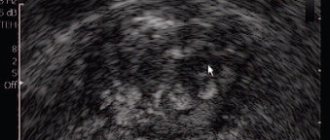Publication date: January 21, 2020
The anti-alcohol drug Disulfiram is quite often used in drug treatment practice. Indications for its use are:
- chronic alcoholism;
- prevention of relapses during treatment.
The drug is presented in different release forms:
- pills;
- small implant capsules;
- oily solution for injections.
It can be taken orally, administered intramuscularly and placed in capsule form by subcutaneous filing.
Disulfiram in the blood: how the drug works
Coding is carried out only by a narcologist; the patient must be absolutely sober. Before the procedure, the patient must maintain sobriety for 3-5 days. The drug itself is harmless; over time, Disulfiram is completely eliminated from the body. During the period of active treatment, after taking a small dose of alcohol, unpleasant sensations begin. A rapid heartbeat can lead to a panic attack, and a person may feel hot or cold.
Poor circulation causes blood to rush to the face. There is almost always nausea and a gag reflex. In this state, fear of death often arises. This leads to the fact that the alcoholic simply will not have the desire to even hold on to the glass. The sight of a bottle of vodka will cause negative associations.
Disulfiram prevents the formation of the enzyme that breaks down ethyl alcohol into two key components - water and carbon dioxide. The medicine inhibits this process at the moment when C2H5OH becomes poison - acetaldehyde. If the patient begins to drink alcohol, severe food poisoning occurs in his body. The symptoms described above will appear. After the experience, the alcoholic will feel a clear disgust for alcohol-containing liquids, even beer will cause negative emotions.
The use of cyanamide in the treatment of patients with alcoholism
One of the directions in the treatment of patients with alcoholism is the use of drugs that cause intolerance to any alcohol-containing drinks. The main principle of treatment in these cases is to eliminate the possibility of drinking alcohol for a long period. With many months of forced abstinence from alcohol, the pathological desire for intoxication decreases or completely disappears, and in some cases an aversion to the sight and smell of alcohol appears. During the period of abstinence from alcohol, psychotherapy is carried out, aimed at changing the patient’s attitude towards the consumption of alcoholic beverages, achieving a critical attitude towards drunkenness and awareness of the need for absolute abstinence from any alcoholic beverages. The effectiveness of psychotherapeutic influence increases when the patient knows that drinking alcohol is impossible due to the immediate occurrence of a severe, subjectively difficult to bear condition.
According to the literature (F. G. Mukharlyamova, 1986; M. Lukomskaya, 1997), at least 10% of people who turn to therapists in connection with somatic diseases, as well as those hospitalized in various therapeutic and surgical hospitals, are alcoholic (suffer from dependence on alcohol). If anti-alcohol therapy is not carried out and alcohol abuse continues, treatment of the somatic disease is ineffective or ineffective. This applies equally to diseases of different systems: cardiovascular (cardiomyopathies, hypertension, atherosclerosis), respiratory (chronic bronchitis, pneumonia, tuberculosis), digestive (acute and chronic gastritis, liver pathology, peptic ulcers, pancreatitis), endocrine and any other pathology of internal organs.
Anti-alcohol treatment is carried out by a psychiatrist-narcologist, but it is permissible, subject to certain conditions (special training of doctors and medical personnel, consultation with a narcologist), the use of certain methods of therapy for alcohol dependence in a somatic hospital (therapeutic, TB, surgical) or clinic.
One of these methods is to carry out courses of treatment with the drug Colme, which causes alcohol intolerance.
Colme (cyanamide) was synthesized in 1953 by Fergusson and was successfully used in medical practice abroad, and since the early 1960s of the last century in the USSR (B. M. Segal, Y. K. Averbakh, 1961, 1964).
Colme is a drug that causes sensitization to alcohol (ethanol). Just like disulfiram (Teturam, Antabuse, Esperal), Colme inhibits the activity of acetaldehyde dehydrogenase, an enzyme involved in the oxidative metabolism of ethanol. As a result, the conversion of acetaldehyde to acetic acid is delayed. Accumulated acetaldehyde has a toxic effect. This effect from Colme is achieved only when drinking alcoholic beverages. Using the drug without drinking alcohol does not cause toxic effects.
The sensitizing effect of Colme appears 45-60 minutes after its administration and persists for 12 hours at a dose of 50 mg and about 24 hours at a dose of 100 mg. According to some reports, intolerance to alcohol occurs 2.5-3 hours after taking Colme.
If you do not drink alcohol, Colme is well tolerated and, as a rule, does not cause side effects. The less toxic effect of the drug compared to Teturam is explained by the fact that it requires a smaller dose (50-100 mg per day) and has a weaker effect on the activity of dopamine beta-hydroxylase. Side effects include drowsiness, muscle hypotension, tinnitus, and with long-term use, hematopoietic disorders are possible. Daytime sleepiness can be easily avoided if you take the drug in the evening, reduce daily doses, and also include injections of vitamin B1 (2-3 ml of a 5% solution) into therapy.
Colme is available in liquid form (6% solution, 1 ml contains 60 mg of the drug). Colme's solution is colorless, has no taste, and is taken in the form of drops (12-25 drops 2 times a day).
The liquid form, unlike tablets, does not allow some patients to spit out the medicine, and it is easier for others to control the drug intake.
Treatment for Colme is carried out in two options. The first involves taking Colme in therapeutic dosages (50-75 mg per day) for several days and then conducting so-called cyanamide-alcohol tests 2-3 times a week. To do this, patients are given 20-40 ml of alcohol (40% vodka) in the presence of a doctor. Repeated occurrence of the reaction conditionally causes an aversion to the taste and smell of alcohol, a decrease or suppression of the desire for alcohol. This technique is not currently used, since its effectiveness does not exceed that when using another option that does not involve repeated cyanamide-alcohol tests.
The second technique consists of long-term (daily) administration of Colme in therapeutic doses, which allows one to achieve “metabolic blockade” - the inability to drink alcohol. With prolonged abstinence from alcohol, the desire for intoxication fades or disappears completely. In some cases, a single cyanamide alcohol test is performed. To do this, a few days after daily intake of 50-100 mg of Colma, the patient is asked to drink 20-40 ml of 40% vodka on an empty stomach. 2-7 minutes after consuming alcohol, sharp hyperemia of the skin, tachycardia (up to 120-140 beats/min), tachypnea, a feeling of difficulty breathing, a slight increase, and then a decrease in blood pressure (both systolic and diastolic) by 20- 30 mmHg Art. Patients complain of a feeling of a rush to the head, a throbbing headache, and discomfort in the head and in the heart area. Hyperemia is observed in the face (except for the nose), ears, neck, upper half of the body, back, and in certain areas of the skin of the arms and legs. At the maximum manifestation of the reaction, which is achieved after 15–20 minutes, cyanosis occurs. The reaction ends on its own after 1 hour. Sometimes, after this period, severe weakness, pulse lability, headache, shortness of breath, and instability of blood pressure are observed.
Indicators of the need to stop the cyanamide-alcohol reaction are sudden shortness of breath, a significant drop in blood pressure (systolic - 80 mm Hg, diastolic - below 20 mm Hg), cyanosis of the skin, and very poor health.
Collaptoid states are extremely rare. In these cases, the patient is given a horizontal position (it is desirable that the head is lower than the legs), drugs that increase blood pressure are administered, and methylene blue is administered intravenously. Inhalation of oxygen is indicated. In general, cyanamide-alcohol reactions proceed more easily than teturam-alcohol reactions.
In the case of a severe cyanamide-alcohol reaction, patients should remain in bed for several hours (usually until weakness disappears and blood pressure normalizes). When conducting cyanamide-alcohol tests, no occurrence of convulsive seizures or psychoses, which are sometimes observed with teturamide-alcohol reactions, was observed.
Regardless of the methods of use of Colme, before starting treatment, it is necessary to inform the patient and his relatives in detail about the effect of the drug. All patients give a written commitment to completely stop drinking alcohol and indicate that they have been warned about the possibility of complications (even the most severe) if the sobriety regime is violated. This “receipt” has a double meaning. Firstly, the patient is warned about the consequences of drinking alcohol, which in itself reduces the intensity of the desire for intoxication. Secondly, if the patient violates the sobriety regime, the doctor does not bear legal responsibility for this.
During the course of many months of taking Colme (the duration of the course is determined individually and depends primarily on the intensity of the pathological desire for intoxication), psychotherapy is required. It is carried out by a psychiatrist-narcologist, psychotherapist or specially trained psychologist. The patient is constantly reminded that he independently made the decision to be treated with Colme and that the main goal of drug therapy is to rid him of alcohol dependence and improve his physical and mental condition.
During treatment with Colma, it is possible to prescribe other drugs to normalize sleep (various sleeping pills for a short time), eliminate depression (certain antidepressants depending on the form of depression), anxiety (anti-anxiety drugs from the group of diazepines and “minor neuroleptics”), asthenic manifestations (vitamin therapy, nootropics).
Colme can also be used to enhance the teturam-alcohol response. This applies to those cases when the dose of alcohol is quite large (more than 50 ml of vodka), and the teturam-alcohol reaction is very weak. Additional use of 50–100 mg of Colme leads to a severe reaction. In this case, caution must be exercised, especially if there is pathology of the cardiovascular system.
Absolute contraindications for the treatment of Colme are infectious diseases, severe somatic and neurological disorders, including chronic somatic diseases in the acute stage (cardiovascular diseases with symptoms of decompensation, severe pulmonary pathology, cirrhosis of the liver, pancreatitis in the acute stage, insufficiency of liver and kidney function , pathology of the thyroid gland). Contraindications are the presence of organic brain damage with frequent seizures and pronounced personality changes, schizophrenia with symptoms of exacerbation of the disease. Colme should not be prescribed during pregnancy and to persons over 60 years of age.
Relative contraindications are moderately severe pathology of internal organs, residual effects of traumatic brain injury, hypertension in the first stage.
Literature
- Segal B. M., Averbakh Y. K. Alcoholism and alcoholic psychoses. M., 1963. pp. 289–294.
- Segal B. M., Averbakh Y. K. Treatment of persons suffering from alcoholism with cyanamide in hospital and out-of-hospital conditions. Instructional and methodological letter. M., 1964. 8 p.
- Segal B. M. Alcoholism. M.: Medicine, 1967. 578 p.
- Lukomskaya M. Alcoholism in Russia. M.: Humanitarian, 1997.
- Mukharlyamova F. G. On the issue of early detection of patients with alcoholism in institutions of the general medical network // Pathogenesis, clinic, therapy of alcoholism and alcoholic psychoses. M., 1986. pp. 200–202.
- Altshuler V. B., Kravchenko S. L., Rusinov A. V. The drug “Colme” as a means of aversion therapy for patients with alcoholism // Psychiatry and psychopharmacotherapy. 2006. T. 8. No. 1.
A. G. Gofman , Doctor of Medical Sciences, Professor T. A. Kozhinova , Candidate of Medical Sciences I. V. Yashkina , Candidate of Medical Sciences, Research Institute of Psychiatry, Moscow
About release forms
When answering the question of how much Disulfiram is excreted from the body, it is necessary to take into account the form of release. The pharmaceutical industry produces a huge number of drugs based on Disulfiram. The difference lies in the mass or proportion of active components. Very often, substances differ in the period of clearing the body of its presence. This medicine is available in three forms:
- Pallets for implantation. A special syringe container is sewn into the patient intramuscularly. To do this, make a small incision on the skin surface. The drug retains its effect, it is tied to the dosage. The standard period is from three to six months. All this time, a small dose of Disulfiram is present in the body. If the patient takes alcohol, vasodilation will occur. Due to the blood flow to the implant location in the body, the percentage of the active component will increase. Because of this, severe poisoning will occur, as described above. Even death is possible.
- Tablet for oral administration. The doctor almost always prescribes one tablet per day. If treatment is successful, the dose is usually reduced. Drinking drinks containing alcohol is strictly prohibited.
- Solution for intravenous, intramuscular administration. The principle of penetration of a substance into the body does not differ from conventional medical procedures. It takes one minute to inject into the buttock or vein. The drug instantly accumulates in the muscles at the injection point. The blood circulation process will make its concentration uniform.
The drug Disulfiram: how long does it take to leave the body?
When answering the question of how long it takes for Disulfiram to be eliminated, it is important to take into account the general condition of the patient and the percentage of the drug. The form of its release is taken into account. The drug is taken:
- Oral. When taking tablets orally, the validity period is two days. But many instructions state that a small amount of medication can last up to two weeks.
- Implants. The drug, sewn under the skin, can remain in the body for five to nine months. Sometimes the maximum period reaches one year! A small amount of Disulfiram accumulates in fatty tissues and is excreted very slowly. This treatment method is considered the most effective. The patient's chance of relapse is minimal. If the sewn-in ampoule is removed ahead of schedule, the effect of the remaining medication lasts another 60 days.
- Intravenously or intramuscularly. The withdrawal time for a Disulfiram injection is six to nine months. Many instructions state that residues can remain in the blood for one year!
It is important to know and remember: the treatment method, method of administration, and dose are prescribed only by the attending physician. Before this, a full examination of the body is carried out, everything will depend on the individual condition of the patient!
Methodology
Before implantation, sewing in the Disulfiram ampoule, the patient must visit a narcologist, accompanied by a relative. The doctor conducts an examination and once again talks in detail about the principles of action of the drug.
Coding is carried out in the clinic or at the patient’s home. When the ampoule is sewn in, the patient’s body area is treated with an antiseptic. An incision is made into the skin. The area is then sutured and a sterile bandage is applied on top.
When sewn in, the removal of Disulfiram from the body occurs gradually.
Antidote
Often, drugs that contain disulfiram are forcibly administered to a person, against his will. Almost always such a patient tries to find an antidote. But it doesn’t exist, and it won’t be possible to remove the substance ahead of time. If a strong reaction to alcoholic beverages occurs, doctors begin gradual intoxication. This is a rather long, complex process. You will need to administer ascorbic acid, Ephedrine, and H1 blockers. This can take from twelve hours to two days. But Disulfiram will not be completely removed - the degree of human poisoning will simply decrease.
Such procedures are carried out only in emergency cases; the removal itself can have a negative impact on the body. A serious dose of ascorbic acid often leads to irreversible consequences and physiological damage. This can cause stomach ulcers or cirrhosis of the liver. There are known cases of impotence and cancer. Many narcologists recommend being extremely careful when using the drug. You can always consult a psychiatrist or undergo a simpler course of therapeutic treatment.
Prices for treatment in our clinics
Rehabilitation
| SERVICE | PRICE, RUB. |
| Rehabilitation in a recovery center. The cost of the economy package per day includes accommodation, meals, and specialist fees. | 900 |
| Initial consultation | for free |
| Rehabilitation in Russia: | |
| Standard program | 1350 |
| Intensive program | 2700 |
| VIP program | 5000 |
| Medical and social rehabilitation (21 days) | 5800 |
| Teen Center | 1500 |
| Outpatient program (1 month) | 32500 |
| Motivation for treatment | 6000 |
| Accompaniment for treatment | 6000 |
| Rehabilitation Spain, Thailand, Israel: | |
| Standard program | 6500 |
| Premium program | 10000 |
| VIP program | 16500 |
| Transfer services | negotiable |
| Additional services: | |
| Consultation with a psychologist | 2500 |
| Psychiatrist consultation | 4000 |
| Psychodiagnostics | 7000 |
| Family psychotherapy | 5000 |
Coding
| SERVICE | PRICE, RUB. |
| Alcohol coding using the Torpedo method. The price includes a consultation with a narcologist | 4 500 |
| Initial consultation | for free |
| Tetlong 3 months | 1500 |
| Esperal gel injection for 1 year | 3500 |
| Double block | 5500 |
| Triple block | 8500 |
| Express output and encoding | 9000 |
| Esperal gel for 1 year | 10500 |
| Implantation of Disulfiram for 1 year | 13500 |
| Vivitrol injection for 1 month | 22000 |
| Fitting Naltrexone | 35000 |
| Coding at home | 8000 |
| Decoding/inactivation | 3000 |
| Psychotherapy session | 25000 |
| Classic hypnosis | 15000 |
| Dovzhenko method | 12000 |
| Ericksonian hypnosis | 10000 |
| Psychodiagnostics | 7000 |
| Departure at night and within Moscow region | negotiable |
| Travel up to 10 km from MKAD | for free |
| Repeated application DISCOUNT | 10% |
Doctor at home
| SERVICE | PRICE, RUB. |
| The price includes a consultation with a narcologist and standard treatment for alcohol poisoning. | 4 500 |
| Double drip | 1500 |
| Reinforced drip | 3000 |
| Maximum cleansing | 5500 |
| Express output and encoding | 9000 |
| VIP detox | 10500 |
| Hospital at home | 17500 |
| Coding at home Torpedo | 8000 |
| Decoding/inactivation | 3000 |
| Motivation for treatment | 6000 |
| Escort to the clinic | 6000 |
| Advanced hospitalization | 15000 |
| Departure at night and within Moscow region | negotiable |
| Travel up to 10 km from MKAD | for free |
| Recall DISCOUNT | 10% |
Outpatient clinic
| SERVICE | PRICE, RUB. |
| Standard treatment for alcohol poisoning in a day hospital without accommodation. Eliminating a hangover | 4 500 |
| Initial consultation | for free |
| Stopping binge drinking | 1500 |
| Enhanced poisoning therapy | 3000 |
| Maximum cleansing | 5500 |
| Express output and encoding | 9000 |
| Hepatoprotective therapy | 2200 |
| Nootropic therapy | 2800 |
| Xenon therapy | 8000 |
| Plasmapheresis | 9000 |
| Consultation with a psychologist | 2500 |
| Psychiatrist consultation | 4000 |
| Psychodiagnostics | 7000 |
| Family psychotherapy | 5000 |
| Psychotherapy session | 25000 |
| General tests, ECG | 2500 |
| Outpatient rehabilitation (1 month) | 25000 |
| Repeated application DISCOUNT | 10% |
Hospital
| SERVICE | PRICE, RUB. |
| Detoxification in the clinic. Accommodation, food and treatment are included in the price of the day | 4 500 |
| Initial consultation | for free |
| Standard ward (3 beds) | 2000 |
| Increased comfort (2 seats) | 5500 |
| VIP chamber | 10500 |
| Express output and encoding | 9000 |
| Escort to the clinic | 6000 |
| Advanced hospitalization | 15000 |
| General tests, ECG | 2500 |
| Hepatoprotective therapy | 2200 |
| Nootropic therapy | 2800 |
| Xenon therapy | 8000 |
| Plasmapheresis | 9000 |
| Consultation with a psychologist | 2500 |
| Psychiatrist consultation | 4000 |
| Psychodiagnostics | 7000 |
| Family psychotherapy | 5000 |
| Dovzhenko method | 12000 |
| Classic hypnosis | 15000 |
| Tetlong 3 months | 6000 |
| Esperal injection for 1 year | 8000 |
| Double block | 10000 |
| Triple block | 13000 |
| Esperal gel for 1 year | 15000 |
| Implantation of Disulfiram for 1 year | 18000 |
| Vivitrol injection for 1 month | 22000 |
| Fitting Naltrexone | 35000 |
| Decoding/inactivation | 3000 |
| Medical and social rehabilitation (21 days) | 120000 |
| Repeated application DISCOUNT | 10% |
About side effects
By its nature and formula, the drug is considered harmless. The danger comes only after drinking alcohol. It is important for a person to be careful in choosing a diet. Even the slightest alcohol content can lead to undesirable consequences. Alcohol is always present in small doses in kvass, syrup, koumiss, sauerkraut, fruit juice, and confectionery. Long-term observations and tests have revealed a number of negative consequences from the drug. The patient may experience:
- Chronic fatigue.
- Migraine.
- Feeling of an unpleasant taste in the mouth.
- Partial memory loss.
- Yellowing of the skin.
- Darkening of urine.
- Intoxication of the kidneys and liver.
This reaction can occur when taking small doses of alcoholic beverages. If you drink 500 milliliters, serious, irreparable consequences can occur. Tachycardia and skin pallor may occur. A little later, seizures, convulsions, and convulsions may occur. Call an ambulance immediately; before it arrives, you can give laxatives.
There are cunning people who undergo treatment with Disulfiram and begin to drink alcohol in small doses. There are no serious side effects, but there is a feeling of moderate intoxication. Systematic intake of 60-70 milliliters of vodka leads to deplorable, irreversible situations. Problems with the liver, heart and blood vessels may occur.
Contraindications
The drug is prescribed only after a thorough medical examination. Disulfiram is usually prescribed to those who have not been helped by simpler and safer treatments. If the patient drank alcohol 48 hours before the appointment, then the first dose is postponed to a later date. The substance is strictly contraindicated for those with mental disorders. Problems always occur in those who suffer from liver and respiratory failure. The drug is not prescribed to those who have heart, vascular, or gastrointestinal diseases. It’s bad if the patient has a stomach ulcer or erosion. The use of Disulfiram is dangerous for pregnant and lactating women. The instructions prohibit administering the substance to adolescents; it is highly undesirable to treat elderly people with it.
It is important to know: treating alcoholism is a complex process. Much of the success will depend on the patient himself, his desire and desire to be cured. Introducing Disulfiram against your will can end in disaster. Before starting treatment, it is advisable to undergo a course of therapy with a psychiatrist. Ignoring this point can lead to serious illnesses and mental disorders. Narcologists speak positively about this drug. Many patients were able to overcome alcoholism and become normal people.
![Table 1. Comparison of the results of treatment with Tribestan for men with oligoasthenozoospermia [7] with mod.](https://ms-pi.ru/wp-content/uploads/tablica-1-sravnenie-rezultatov-lecheniya-tribestanom-muzhchin-s-oligoastenozoospermiej-7-330x140.jpg)



